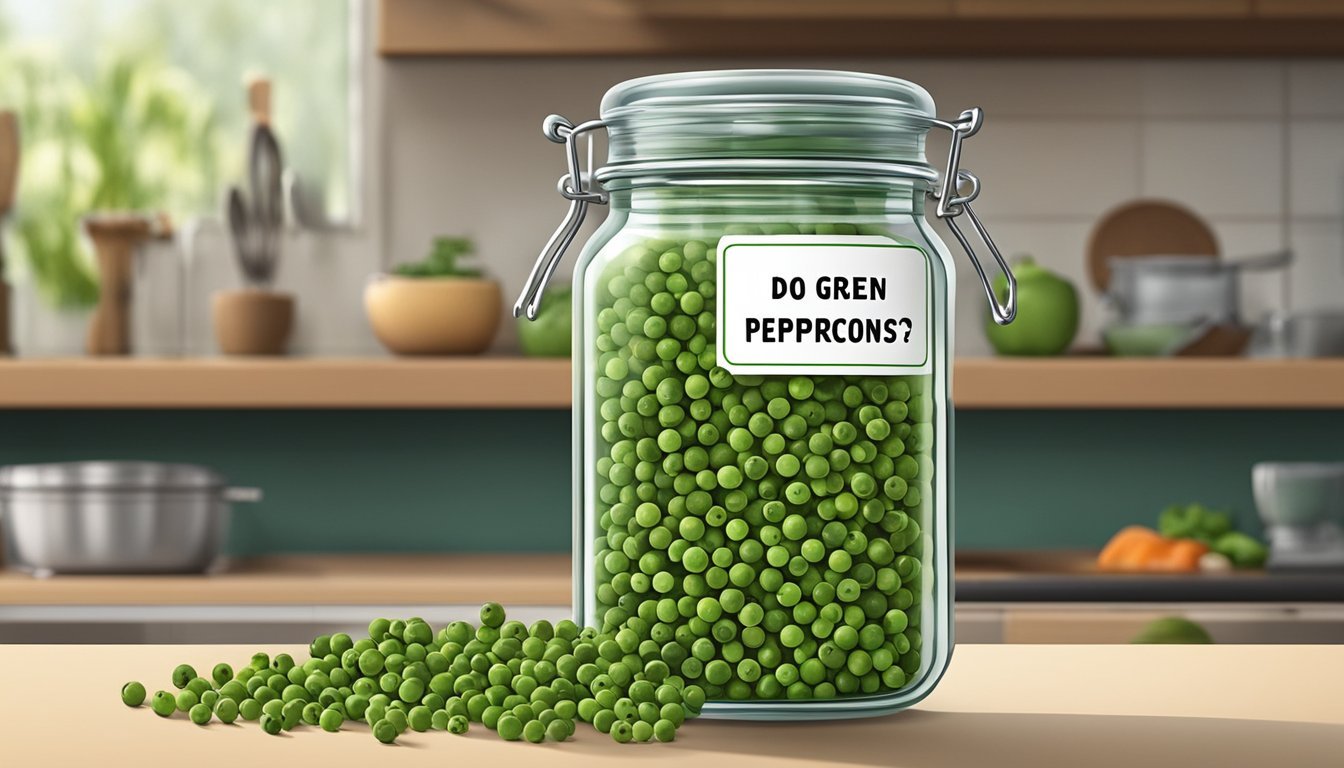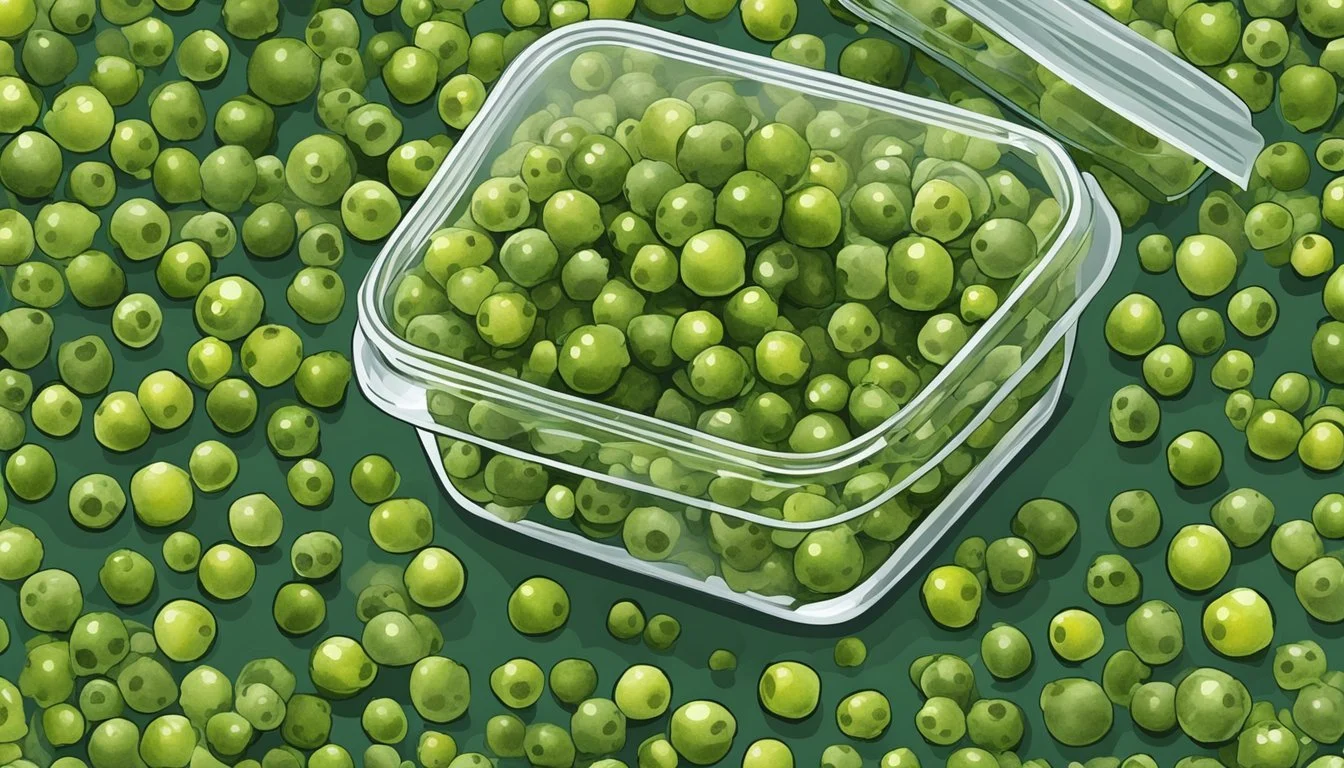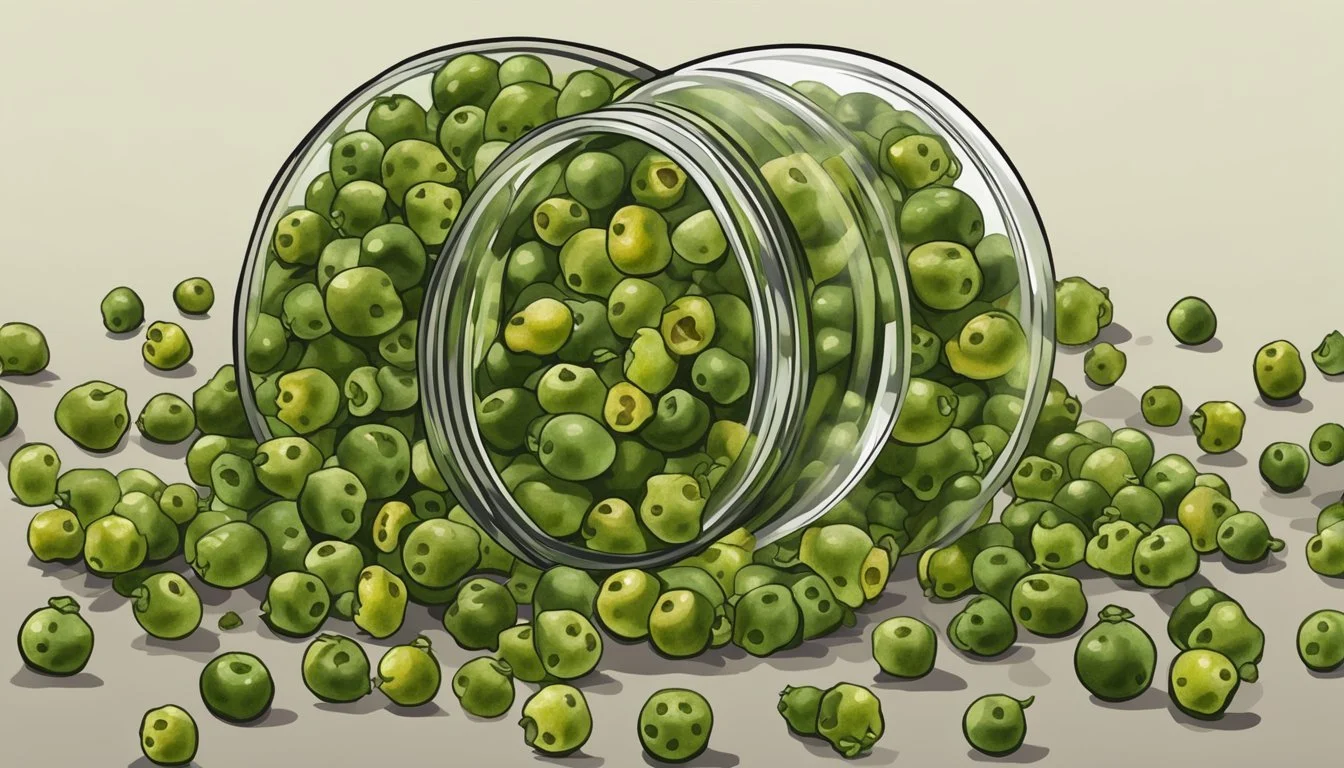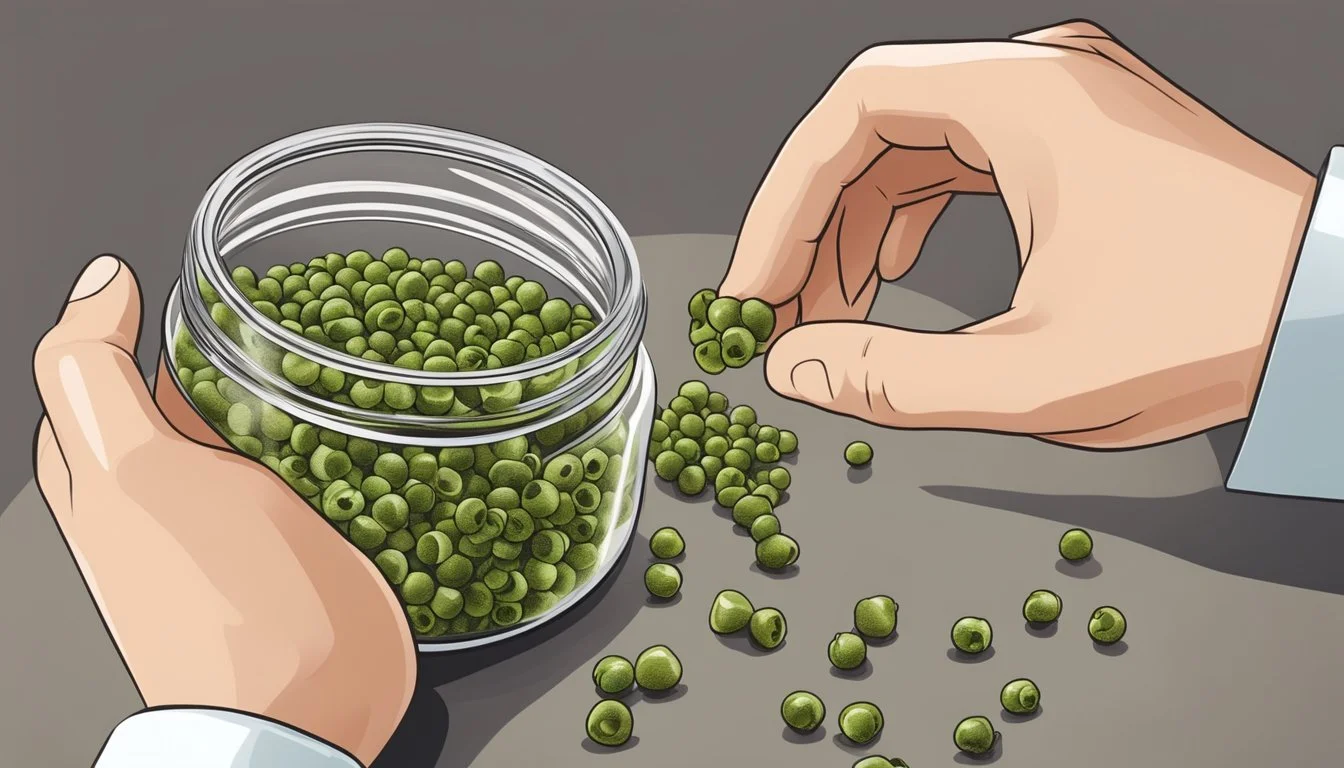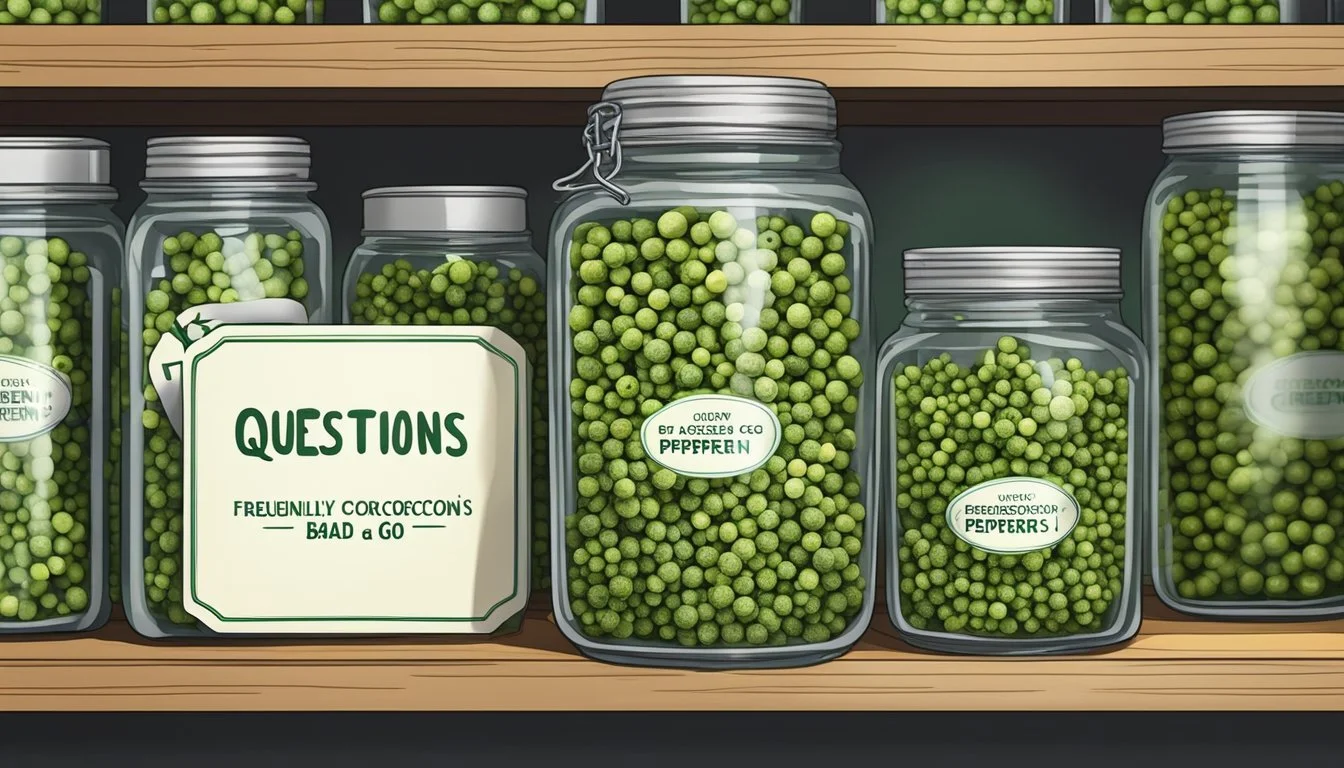Do Green Peppercorns Go Bad?
Tips on Storage and Shelf Life
Green peppercorns, known for their milder and fresher flavor compared to their black counterparts, do have a limited shelf life. When stored properly, green peppercorns can retain their quality for up to one year. Proper storage involves keeping them in a cool, dry place, away from direct sunlight and moisture.
Despite their delicate nature, green peppercorns can be enjoyed for months if the right precautions are taken. Signs that green peppercorns have spoiled include a dull color and a significant loss of their characteristic potency. If these signs are present, it is best to discard the peppercorns to ensure the freshness of your dishes.
By understanding the lifespan and optimal storage methods for green peppercorns, you can make the most of their unique flavor in your culinary creations. Paying attention to these details guarantees that the peppercorns will enhance your recipes with their best possible taste and aroma.
Understanding Green Peppercorns
Green peppercorns, harvested from the Piper nigrum plant, offer a unique flavor profile and diverse culinary applications. This section explores their key characteristics, varieties of peppercorns, and how they enrich various dishes.
Characteristics of Green Peppercorns
Green peppercorns are known for their bright, grassy flavor and slightly piquant aroma. These peppercorns are harvested while still immature, giving them a distinct green color and softer texture.
They have a milder taste compared to black or white peppercorns, making them ideal for dishes where a subtle spice is desired. Due to their higher moisture content, they are often preserved through brining, freeze-drying, or pickling to extend their shelf life.
Types and Varieties of Peppercorns
Peppercorns come in various types, each with unique flavors and uses:
Black Peppercorns: Fully mature and sun-dried, with a sharp, robust flavor.
White Peppercorns: Ripe berries with the outer shell removed, offering a milder, sweeter taste.
Red Peppercorns: Fully ripe but less common, known for a fruitier profile.
Pink Peppercorns: Not true peppercorns, these berries from a different plant add a sweet, floral note.
Green peppercorns, due to their specific maturation stage, stand out for their fresh, vibrant flavor, making them versatile in culinary applications.
Culinary Uses of Green Peppercorns
Green peppercorns enhance a wide range of dishes with their unique flavor. They are particularly popular in sauces for meats and seafood, adding a subtle, peppery punch without overpowering the dish.
In pickling, they provide a fresh and zesty note, complementing a variety of vegetables. They are also ideal for seasoning creamy dishes, lending a gentle heat that balances rich ingredients.
Their tender texture and delicate flavor make green peppercorns a favored seasoning in French cuisine, often featured in peppercorn sauces served with steaks and roasts.
How to Determine Freshness and Quality
To maintain the flavor and usability of green peppercorns, understanding the signs of freshness and spoilage is crucial. This helps in ensuring that they are effective and safe to use.
Indicators of Fresh Green Peppercorns
Fresh green peppercorns should exhibit a vibrant green color and firm texture. The aroma should be strong and pungent, indicating high levels of essential oils that provide their characteristic zest. When tasted, fresh peppercorns will deliver a sharp and robust flavor.
Additionally, the surface should be unblemished, without any signs of discoloration or spots. A test of freshness is to lightly crush a peppercorn; it should release a fragrant burst of aroma.
Signs of Spoilage in Peppercorns
Spoiled or expired peppercorns often show changes in color and texture. They may appear dull or faded and feel soft or spongy to the touch. This happens due to humidity exposure, which can also lead to mold growth.
A significant loss of aroma and flavor signifies that the peppercorns have lost their pungency. Moreover, an off or rancid smell indicates spoilage. Using expired peppercorns can pose health risks, so they should not be consumed if these signs are present.
Proper Storage Techniques
Proper storage of green peppercorns can significantly extend their shelf life and preserve their flavor and aroma. Following these techniques will help maintain their quality for up to a year or more.
Ideal Conditions for Storing Peppercorns
Green peppercorns should be stored in a cool and dry place away from direct sunlight.
Temperature and humidity play crucial roles in maintaining their freshness. Ideal storage conditions include a temperature range between 50°F and 70°F and low humidity levels (below 60%).
Airtight containers made of glass or heavy-duty plastic are preferred to prevent exposure to air, which can cause the volatile oils in the peppercorns to oxidize. Keeping moisture out is essential to avoid mold and mildew growth.
Extending Shelf Life through Proper Storage
Utilizing airtight containers effectively extends the shelf life of green peppercorns. These containers prevent air and moisture from degrading the peppercorns.
For those looking to maximize shelf life, storing green peppercorns in the refrigerator or freezer can be beneficial. The cooler temperatures slow down the degradation process and keep the volatile oils intact.
However, when freezing, it's essential to use moisture-resistant, airtight packaging to prevent freezer burn and maintain the peppercorns' quality.
Effects of Storage on Flavor and Aroma
The way green peppercorns are stored directly impacts their flavor and aroma. Improper storage, such as exposure to air and moisture, leads to the loss of the peppercorns' volatile oils, resulting in a milder taste and less pungent aroma.
To retain their potent flavor and distinct aroma, green peppercorns should be stored in airtight containers in a cool, dry place. These storage conditions minimize oxidation and help preserve their essential oils.
Regularly checking the peppercorns for signs of degradation, such as musty odors or color changes, ensures they remain in peak condition for use in various culinary applications.
How to Use Green Peppercorns
Green peppercorns are versatile and can add a unique, mild peppery flavor to a variety of dishes. They can be used whole, crushed, or ground, and knowing how to prepare and use them can enhance their contribution to your culinary creations.
Preparing and Grinding Fresh Peppercorns
Fresh green peppercorns can be used directly in recipes, but for a more intense flavor, they can be ground or crushed. Grinding increases the surface area, releasing more oils and aromatics.
To grind fresh peppercorns, use a mortar and pestle or a spice grinder. If the peppercorns are dried, soak them in warm water for 15-20 minutes to rehydrate them first. This step ensures they are soft and easier to grind.
When ground, green peppercorns can be used similarly to black pepper to season dishes. Grind them only as needed to preserve their flavor and potency.
Incorporating Into Recipes for Optimal Flavor
Green peppercorns shine in recipes that benefit from their mild, slightly tart flavor. They can be added whole to sauces, marinades, and brines, where they soften and infuse the dish with subtle heat.
Crushed or ground green peppercorns can enhance the flavor of dressings, soups, and stews. They pair well with chicken, fish, and pork, bringing out the natural flavors without overwhelming them.
To use in a dish, start with a small amount and adjust to taste. For example, when infusing spirits like gin, adding green peppercorns can impart a delicate spiciness. Always store any unused peppercorns in an airtight container in a cool, dark place to maintain their freshness.
Expiration and Longevity
Green peppercorns, though more delicate than their black counterparts, can retain their quality with proper storage. Understanding their shelf life and handling larger quantities effectively is key.
Assessing the Lifespan of Green Peppercorns
Green peppercorns have a shelf life of up to one year when stored correctly. Unlike black peppercorns, their less mature state makes them more susceptible to deterioration.
Signs of expired green peppercorns include loss of color, a musty odor, and a soft or crumbly texture. Proper storage in airtight containers, away from direct light and moisture, can extend their longevity. Keeping them in a cool, dry place is essential to maintain their flavor and usability.
Handling Large Quantities and Bulk Purchases
When purchasing green peppercorns in bulk, it's important to manage them properly to prevent waste. Dividing the bulk quantity into smaller portions and storing them in airtight containers ensures maximum freshness.
Labeling containers with the purchase date helps track expiration dates. Using vacuum-sealed bags for long-term storage can be beneficial. This method reduces air exposure, which helps maintain quality. Properly handled, bulk green peppercorns can maintain their potency for up to one year.
Sourcing and Selecting High-Quality Peppercorns
Selecting high-quality peppercorns involves knowing where to source them and understanding their historical significance. Quality and trustworthiness of the supplier are paramount to ensuring an authentic culinary experience.
Choosing a Reputable Source
When sourcing peppercorns, especially green peppercorns, it's crucial to rely on trusted suppliers. Reputable sources often provide detailed information about the origin and processing methods used. Look for suppliers who offer transparent quality assurance and preferably those that specialize in spices.
Buying whole peppercorns rather than pre-ground ensures better flavor and shelf life. Green peppercorns should be vibrant in color and may be freeze-dried or preserved in brine. Bulk purchases often offer better cost-effectiveness but ensure proper storage to maintain quality.
Understanding the Spice Trade and History
Peppercorns have a storied history, being a significant commodity in the spice trade. This trade played a pivotal role in shaping global currency and economic systems. The quality and type of peppercorns were often indicators of wealth and status.
Green peppercorns, harvested from the unripe berries of the pepper plant, were traditionally used and appreciated for their unique flavor. Understanding this history can enhance the appreciation of their culinary uses and ensure informed choices when selecting and using different types of peppercorns in cooking.
Frequently Asked Questions
Do green peppercorns go bad?
Green peppercorns can go bad if not stored correctly. Look for signs like a dull color, loss of flavor, or a rancid smell.
How long do green peppercorns last?
When stored properly in a cool, dry place away from sunlight, green peppercorns typically last up to 1 year.
What is the best way to store green peppercorns?
To maximize shelf life, place green peppercorns in an airtight container and keep them in a cool, dry, and dark location.
Can green peppercorns be frozen?
Yes, freezing can extend their shelf life, but they must be placed in airtight containers or vacuum-sealed bags to prevent moisture.
How can you tell if green peppercorns have gone bad?
Check for a rancid smell, loss of flavor, or a discoloration to determine if green peppercorns are no longer fresh.
Are green peppercorns more delicate than black peppercorns?
Yes, green peppercorns are less mature and therefore, tend to be more delicate compared to black peppercorns.
Does grinding affect their shelf life?
Grinding green peppercorns can reduce their shelf life because ground pepper loses its flavor more quickly.
Can old green peppercorns make you sick?
Old green peppercorns won't make you sick, but their flavor will diminish over time.

